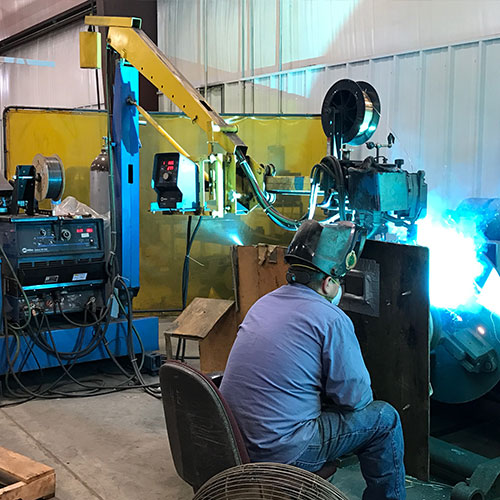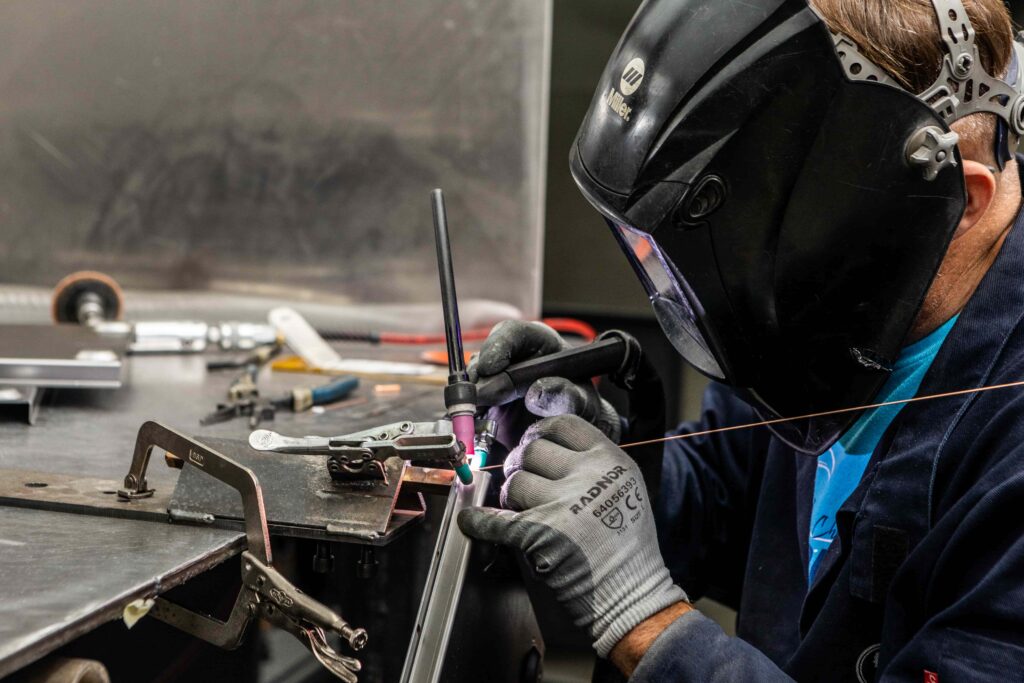Professional Welding Inspection Service for Structural Stability
Professional Welding Inspection Service for Structural Stability
Blog Article
Understanding the Different Sorts Of Welding Techniques and Services Available

Review of Welding Methods
Welding techniques include a varied range of approaches utilized to join products together completely. One typical method is arc welding, which includes producing an electric arc in between the base and an electrode material to melt and fuse them together. This strategy is versatile and can be made use of with various metals, making it among the most extensively used welding procedures.

Furthermore, TIG welding, or Gas Tungsten Arc Welding (GTAW), is a clean and precise welding technique that makes use of a non-consumable tungsten electrode to produce the weld. TIG welding is typically made use of for thinner products and supplies outstanding control over the welding procedure. In general, comprehending these various welding methods is crucial for selecting the most appropriate technique for various projects.
Generally Utilized Welding Approaches
A series of frequently used techniques are employed in the area of welding to successfully sign up with materials with each other. Among the most widely utilized strategies is Gas Steel Arc Welding (GMAW), likewise recognized as MIG welding. This technique utilizes a wire electrode that is fed with a welding gun, together with a securing gas to secure the weld from impurities in the air. One more typical method is Protected Metal Arc Welding (SMAW), or stick welding, which makes use of a flux-coated electrode to develop the weld. Tungsten Inert Gas (TIG) welding is preferred for its accuracy and flexibility, using a non-consumable tungsten electrode to generate the weld. Flux-Cored Arc Welding (FCAW) is typically made use of in industrial setups as a result of its high welding speed and mobility. Furthermore, Submerged Arc Welding (SAW) is excellent for producing deep welds on thick materials. These typically used welding methods satisfy various demands and products, giving alternatives for numerous welding applications.
Advanced Welding Solutions
Building upon the foundation of generally used welding techniques, the realm of innovative welding services encompasses sophisticated methods and innovations that press the boundaries of accuracy and performance in material joining processes. Advanced welding services commonly entail specialized approaches such as laser welding, electron beam of light welding, and rubbing mix welding. Laser welding uses a highly concentrated beam of light of light to exactly join steels with minimal heat-affected zones, making it suitable for complex or delicate elements. Electron beam of light welding, on the various other hand, uses a high-velocity electron beam of light to develop deep weld infiltrations in products like aerospace alloys or dissimilar steels. Rubbing stir welding, a solid-state joining procedure, enables the welding of materials that are testing to fuse making use of conventional approaches, like light weight aluminum and copper. These sophisticated you could try this out techniques offer improved control over the welding procedure, leading to more powerful, extra durable welds with minimized distortion and boosted general quality.
Specialized Welding Methods

An additional specialized welding technique is laser beam welding, where an extremely concentrated light beam of light is utilized to sign up with steels with marginal heat-affected areas and distortion. This method is commonly used in industries needing high precision and sanitation, such as electronics and medical device manufacturing. Additionally, eruptive welding is a special method that utilizes controlled dynamites to bond dissimilar steels together, developing strong and reputable joints. These specialized welding techniques display the variety and development existing in the area of welding, offering options for a wide variety of industrial applications.

Choosing the Right Welding Refine
With different welding strategies readily available, it is critical to take into consideration aspects such as the type of steel, density, joint style, and desired end outcome when choosing the best welding procedure. Among the usual welding techniques are Gas Metal Arc Welding (GMAW), Shielded Metal Arc Welding (SMAW), Gas Tungsten Arc Welding (GTAW), and Flux-Cored Arc Welding (FCAW) GMAW, also known as MIG welding, is ideal for welding thin to thick metals and is versatile in numerous settings.
Final Thought
Finally, understanding the numerous types of welding strategies and solutions offered is important for selecting the right technique for a details project. By recognizing the frequently used welding approaches, advanced welding services, and specialized methods, individuals can make informed decisions to guarantee the success of their welding tasks. It is essential to think about elements such as products, project needs, and budget when selecting the most ideal welding procedure.
From typical techniques like stick welding to sophisticated procedures such as laser welding, the globe of welding provides a plethora of options for signing up with metals together.Furthermore, TIG welding, or Gas Tungsten Arc Welding (GTAW), is a clean and specific welding technique that makes use of a non-consumable tungsten electrode to create the weld. Advanced welding important link services commonly include specialized methods such as laser welding, electron beam welding, and friction stir welding. Amongst the typical welding approaches are Gas Metal Arc Welding (GMAW), Shielded Metal Arc Welding (SMAW), Gas Tungsten Arc Welding go to my blog (GTAW), and Flux-Cored Arc Welding (FCAW) By being aware of the generally used welding methods, advanced welding services, and specialized methods, people can make informed decisions to guarantee the success of their welding jobs.
Report this page